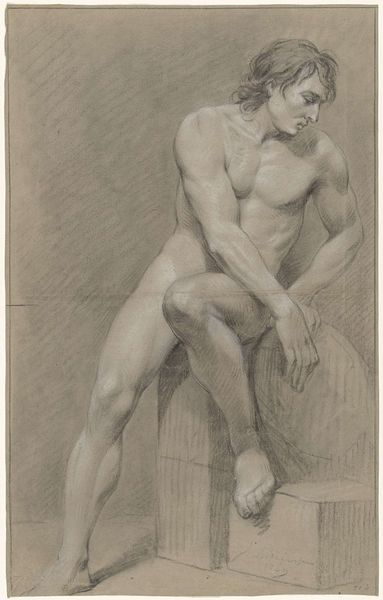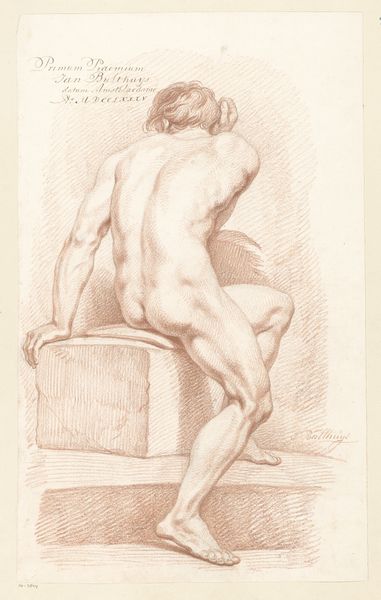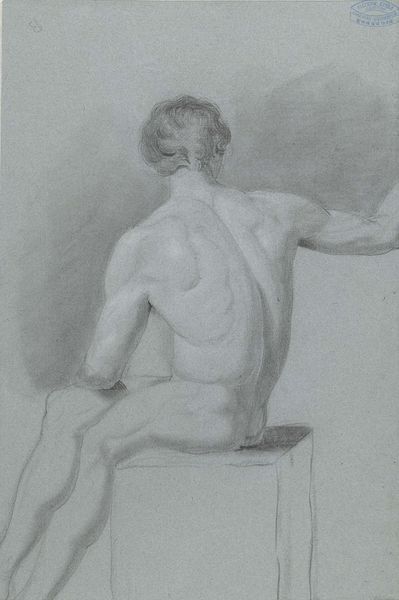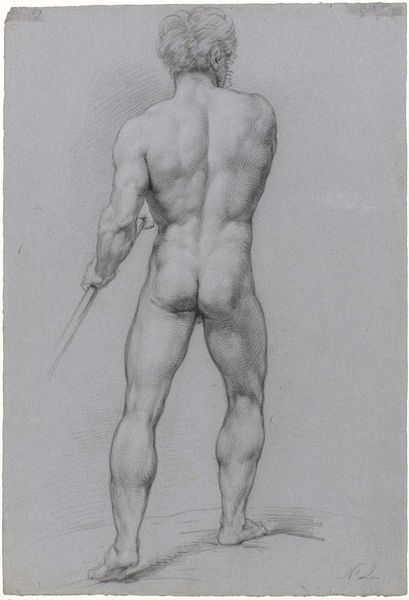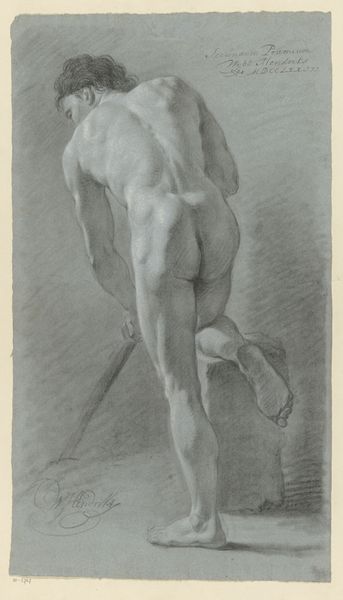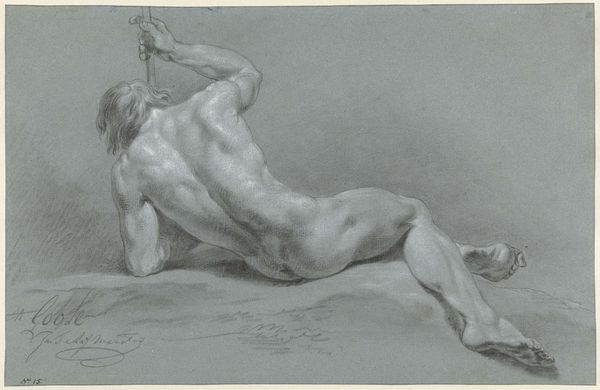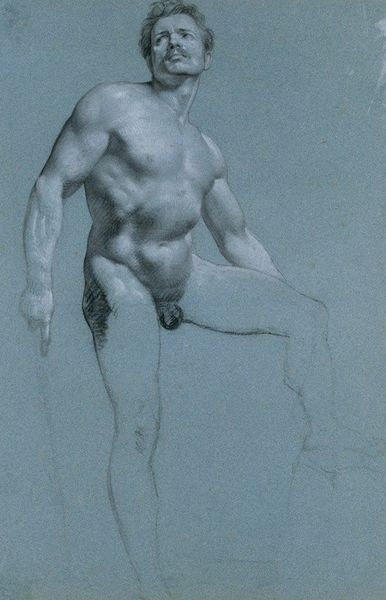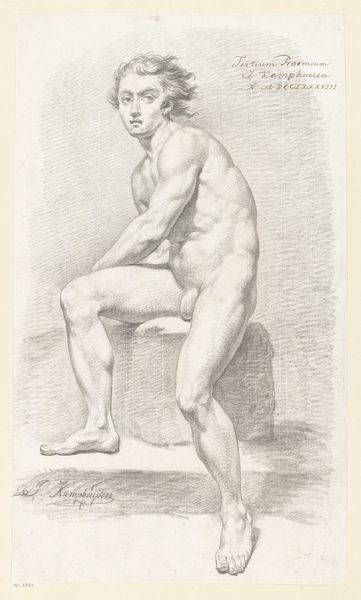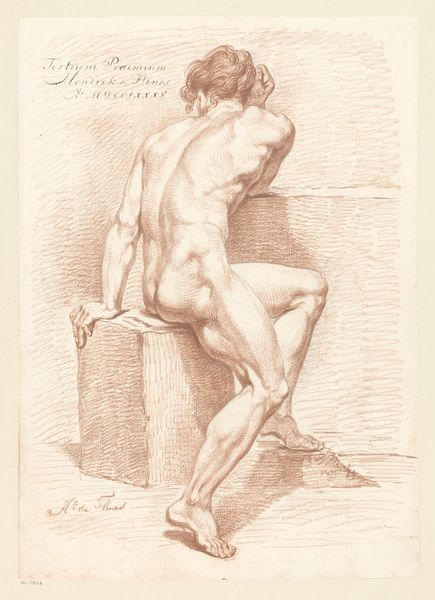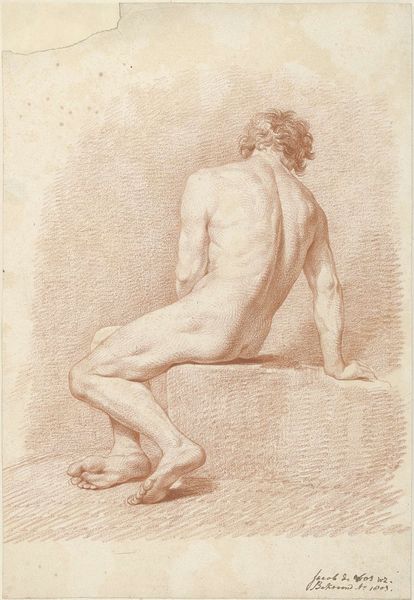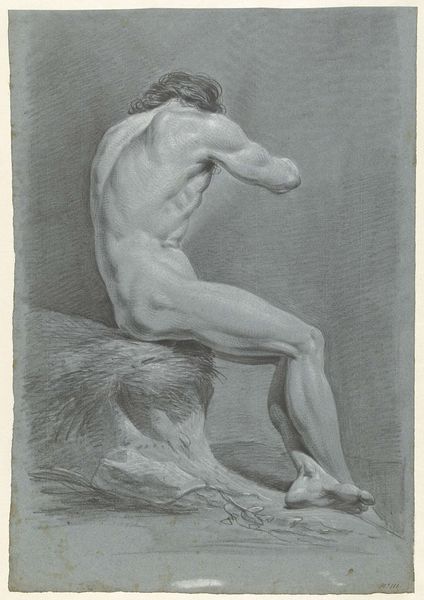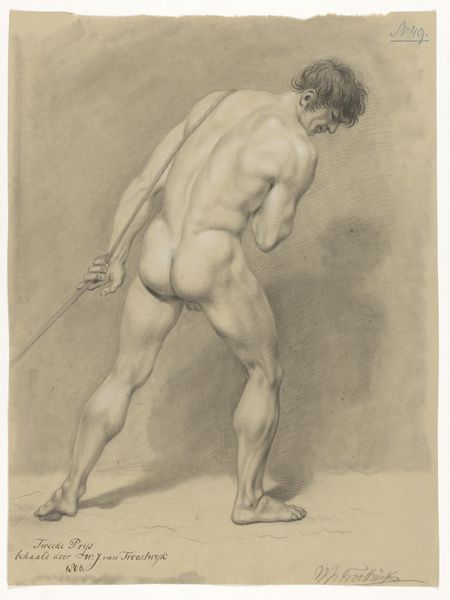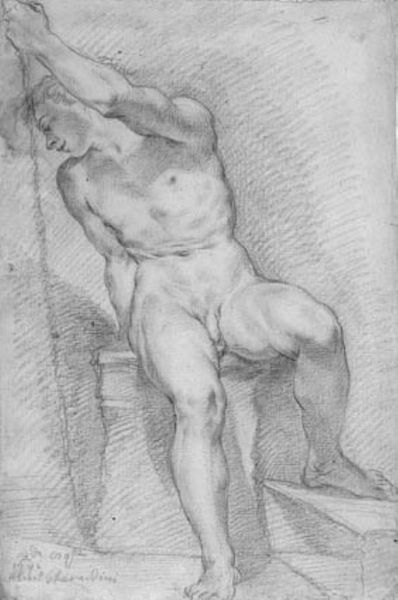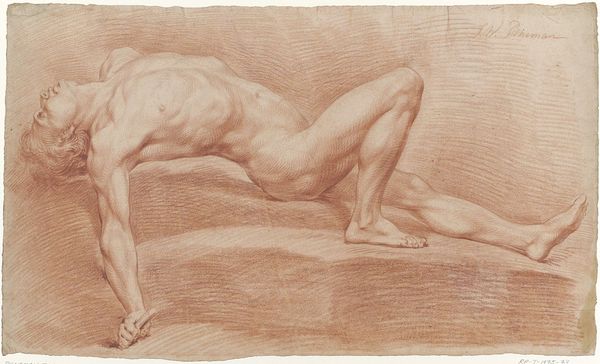
drawing, pencil, graphite
#
portrait
#
drawing
#
neoclacissism
#
charcoal drawing
#
figuration
#
pencil drawing
#
pencil
#
graphite
#
academic-art
#
nude
Dimensions: height 540 mm, width 340 mm
Copyright: Rijks Museum: Open Domain
Curator: Standing before us is a work titled "Zittend mannelijk naakt, de armen op de rug," which translates to "Seated Male Nude, Arms on Back," a graphite and pencil drawing potentially created between 1789 and 1853 by Jan Willem Pieneman. What's your initial take on it? Editor: It strikes me as rather melancholic. The figure's posture, arms clasped behind his back, and the slightly bowed head create a sense of introspection or even resignation. The muted grey tones add to that somber mood. Curator: The positioning and classical rendering are heavily indebted to Neoclassical ideals prevalent during that time. The nude form itself carried the weight of classical Greek and Roman art, embodying ideas of heroism, reason, and ideal beauty. Pieneman was likely drawing on these established visual tropes, engaging in the public role art plays to portray important political imagery in a classical way. Editor: Yes, but that clasping of hands behind the back complicates things. It almost seems like a subtle constraint, contrasting against the intended freedom and power associated with the nude male figure. It introduces an element of psychological tension, as though the man is holding something back or being held back himself. I can feel his distress. Curator: That restraint is an interesting counterpoint. One could interpret the image as a representation of intellectual confinement or a commentary on societal expectations, clashing the perfect rendering and the lack of true freedom. In terms of iconography, hands behind the back often symbolize captivity or defenselessness. Pieneman was operating within specific cultural expectations when displaying male heroism, but his art might offer a contrasting view that still feels familiar. Editor: And even technically, the level of detail and shading across the musculature is compelling, yet he intentionally obscures the face. It pushes me as a viewer to find the emotions the subject might feel despite his closed-off body language. The soft gradations achieved with the pencil create depth but contribute to that overall muted feeling. Curator: Agreed. The face's anonymity shifts our focus. The artwork moves beyond being a portrait of an individual and morphs into an examination of universal themes. I think that by not putting as much emphasis on who this person *is,* the work manages to last as a visual representation of broader society. Editor: Ultimately, I see this image as more than a mere study of form. It uses the symbolism of classicism but presents an interpretation that speaks of repressed emotions or suppressed strength—offering layers of complexity for our modern viewers. Curator: Precisely. A work where the dialogue between classical form and the weight of expression continues to resonate with us now.
Comments
No comments
Be the first to comment and join the conversation on the ultimate creative platform.
